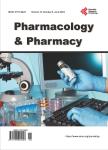Accelerated Aqueous Solubility and Antibacterial Activity of Cefuroxime Axetil Using Microcrystalline Cellulose as Carrier
Accelerated Aqueous Solubility and Antibacterial Activity of Cefuroxime Axetil Using Microcrystalline Cellulose as Carrier作者机构:Laboratory of Pharmaceutics Department of Pharmacy Faculty of Science University of Rajshahi Rajshahi Bangladesh Laboratory of Pharmaceutical Engineering & Drug Delivery Science School of Pharmaceutical Science University of Shizuoka Shizuoka Japan Department of Basic Medical Sciences Faculty of Medicine International Islamic University Malaysia Kuantan Malaysia
出 版 物:《Pharmacology & Pharmacy》 (药理与制药(英文))
年 卷 期:2020年第11卷第8期
页 面:159-173页
学科分类:081704[工学-应用化学] 07[理学] 070304[理学-物理化学(含∶化学物理)] 08[工学] 0817[工学-化学工程与技术] 0703[理学-化学]
主 题:Cefuroxime Axetil Dispersion Solubility Antibacterial Activity
摘 要:This investigation was undertaken to enhance the solubility and consequent antibacterial activity of cefuroxime axetil (CA), a β-lactamase-stable broad spectrum second generation cephalosporin through solid dispersion (SD) technique. For this purpose, CA loaded SDs (CSDs) were prepared by solvent evaporation method using different concentrations of microcrystalline cellulose (MCC) as carrier. The CSDs were characterized by in-vitro dissolution study, thermal analysis (DSC), crystallinity (PXRD), interactions (FTIR) and morphology (SEM). Among the formulations, CSD-2 showed the highest dissolution rate which was 2.59-fold higher than pure CA with a drug-carrier (CA: MCC) ratio of 1:3. Enhanced dissolution rate was attributed to conversion of drug from crystalline to amorphous state during preparation of SDs, which was validated by DSC, PXRD, FTIR and SEM analyses. Antibacterial activity of CSD-2 against Staphylococcus aureus (ATCC 25923) and Escherichia coli (ATCC 25922) showed 1.94- and 6.75-fold higher relative zone of inhibition (RZOI), respectively than pure CA. CSD-2 has been found to be the most effective optimized formulation in terms of both enhanced dissolution rate and antibacterial activity. Thus, it can be an effective alternative to conventional dosage forms of CA. However, further investigations are needed to validate its pharmacokinetic properties, in-vivo antibacterial efficacy and safety before recommending as a novel



